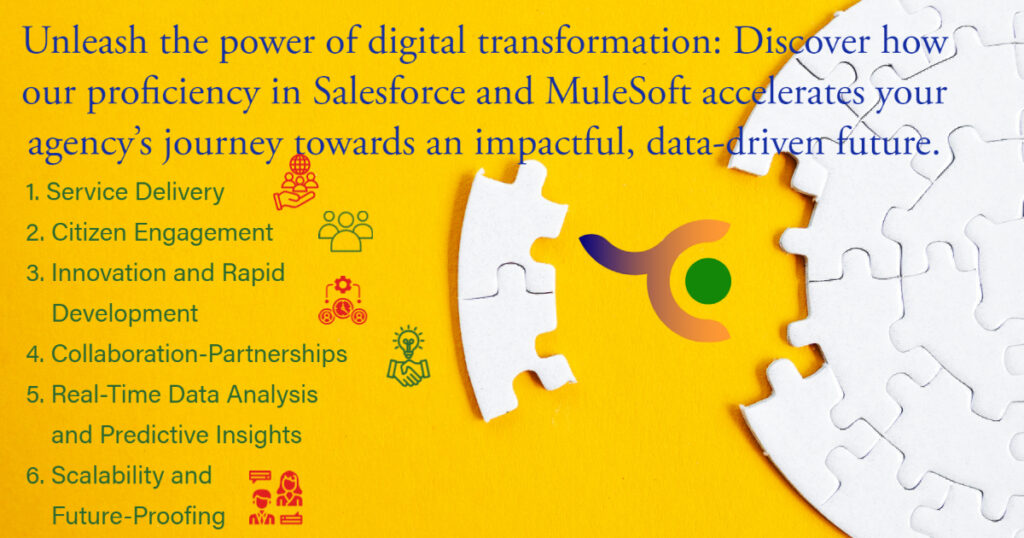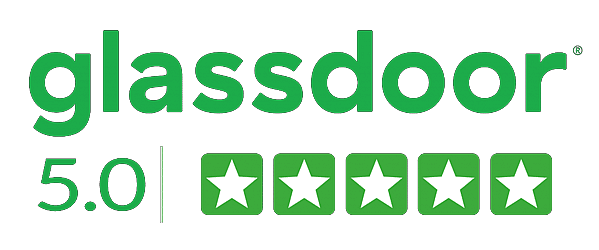In today’s fast-paced digital era, government agencies worldwide are recognizing the urgent need for digital transformation. It is important to enhance their services, improve operational efficiency, and deliver better outcomes for citizens. However, The adoption of emerging technologies, streamlined processes, and data-driven decision-making has become essential for government entities to keep pace with the evolving needs and expectations of the public.
Introduction
The agency recognizes the pressing need for digital transformation due to various factors. These include rising citizen expectations for seamless digital services. Also the need for increased operational efficiency, and the potential cost savings associated with automation and digitization. Additionally, the agency understands the importance of harnessing data and analytics to make informed decisions and improve policy-making processes.
Hence, by leveraging innovative technologies and modernizing their operations, this agency aims to revolutionize service delivery, foster citizen engagement, and optimize resource utilization.
The Challenge
One significant challenge the government agency faces in its digital transformation journey is ensuring the seamless integration and adoption of citizen-centric digital services. While the agency aims to enhance service delivery and citizen engagement through digital channels, several hurdles need to be overcome:
User Adoption and Digital Literacy
Encouraging citizens to embrace and utilize digital services can be challenging, especially among populations with limited digital literacy or access to technology. The agency needs to design user-friendly interfaces and provide clear instructions. And it also offers support to bridge the digital divide and ensure that all citizens can benefit from the transformed services.
Trust and Security Concerns
Building trust among citizens regarding the security and privacy of their data is crucial. Many individuals may have concerns about sharing personal information online or conducting transactions digitally. The agency must prioritize data security measures, and communicate transparently about data handling practices. It also establishes robust privacy safeguards to address these concerns and gain citizen trust.
Inclusivity and Accessibility
Digital transformation should not exclude specific segments of the population, including those with disabilities, elderly citizens, or individuals in remote areas with limited internet connectivity. Ensuring accessibility and inclusivity by providing alternative channels or accommodations for those who cannot access or navigate digital platforms is essential. This may involve maintaining non-digital service options or employing assistive technologies for individuals with disabilities.
Service Redesign and Process Streamlining
Digital transformation offers an opportunity to reimagine and streamline government services. However, this requires reevaluating and redesigning existing processes and workflows to align with digital platforms. Identifying inefficiencies, eliminating bureaucratic bottlenecks, and adopting user-centric approaches. They are essential for delivering streamlined and efficient services that meet citizen expectations.
Resource Allocation and Capacity Building
Implementing digital transformation initiatives necessitates allocating resources effectively. This includes investing in appropriate technological infrastructure, and training staff to adapt to digital tools and processes. And it is ensuring sufficient staffing to manage and maintain digital services. Balancing resource allocation between maintaining traditional channels and investing in digital capabilities can be challenging for the agency.
Continuous Engagement and Feedback Mechanisms
Citizen engagement should extend beyond the initial implementation phase. Establishing effective feedback mechanisms, such as online surveys, social media engagement, or public consultations, can help the agency understand citizens’ needs, preferences, and pain points. Continuous engagement allows for iterative improvements and ensures that digital services evolve based on citizen feedback and evolving requirements.
The Solution

By implementing our solutions, the government agency enhanced service delivery, increase citizen engagement, and optimize resource utilization as part of its digital transformation journey in the public sector.
Service Delivery for digital transformation
- User-Centric Design: Prioritize user experience by conducting user research, usability testing, and incorporating citizen feedback during the design and development of digital services. Ensure intuitive interfaces, clear instructions, and personalized experiences to enhance service delivery.
- Streamlined Processes: Identify and eliminate bureaucratic bottlenecks, simplify application procedures, and automate manual processes to streamline service delivery correspondingly. Implement workflow management systems to track and optimize service delivery timelines.
- Performance Metrics and Monitoring: Establish performance metrics to track service delivery efficiency, responsiveness, and citizen satisfaction. Regularly monitor and analyze data to identify areas for improvement and take proactive measures to address service gaps.
Citizen Engagement
- Multi-Channel Engagement: Provide multiple channels for citizen engagement, such as web portals, mobile apps, social media platforms, and helplines, to cater to diverse citizen preferences and accessibility needs.
- Interactive Feedback Mechanisms: Implement online feedback forms, surveys, and rating systems to gather citizen feedback on services accordingly. Actively respond to feedback and communicate how citizen input is used to improve services, ensuring a sense of participation and collaboration.
- Online Consultations and Collaboration: Engage citizens in policy-making processes through online consultations and collaborative platforms chiefly. Seek public input on key decisions, solicit ideas, and encourage dialogue to foster a sense of ownership and inclusivity in governance.
Resource Utilization in digital transformation
- Digital Skills Development: Invest in training programs to enhance digital skills among government employees. Provide comprehensive training on emerging technologies, data analytics, cybersecurity, and user-centric service delivery to maximize resource utilization and drive digital transformation.
- Agile Project Management: Adopt agile methodologies and project management frameworks to improve resource allocation and optimize project timelines. Iterative development and continuous improvement methodologies enable flexibility and efficient utilization of resources altogether.
- Cloud Computing and Shared Services: Leverage cloud computing infrastructure and shared services models to optimize resource utilization. Basically, Cloud-based platforms reduce infrastructure costs, provide scalability, and enable efficient data storage and sharing across government agencies.
Collaboration and Partnerships
- Public-Private Partnerships: Foster collaborations with private sector entities, academia, and non-profit organizations to leverage their expertise, resources, and technologies explicitly. Partnerships can accelerate digital transformation, enhance service delivery, and facilitate knowledge sharing.
- Interagency Cooperation: Promote interagency collaboration and data sharing by establishing data governance frameworks, standardized protocols, and interoperable systems. Conversely, By breaking down silos, government agencies can optimize resource utilization, eliminate redundancies, and provide seamless services to citizens.
Continuous Evaluation and Adaptation
Data-Driven Decision-Making: Utilize data analytics to measure the impact of digital initiatives, identify bottlenecks, and make informed decisions for resource allocation. Identically, Data-driven insights enable the agency to continuously improve services, optimize resource utilization, and align digital transformation efforts with citizen needs.
Iterative Improvements: Adopt an iterative approach to digital transformation, continuously monitoring and evaluating service delivery and citizen engagement significantly. In addition, use feedback loops to make incremental improvements based on citizen input, emerging trends, and changing requirements.
The Results
Through process automation and streamlining, the agency has reduced turnaround times and eliminated bottlenecks, resulting in a 50% increase in service delivery efficiency. Overall, citizens now experience faster response times and quicker access to government services.
Our user-centric design approach has led to a 70% increase in citizen satisfaction. Generally, User-friendly interfaces, clear instructions, and personalized experiences have significantly improved the overall experience of accessing government services digitally.
By prioritizing data security, privacy, and transparent communication about data handling practices, the agency has gained the trust of citizens. Trust in the government’s digital services has increased by 70%, leading to higher engagement and increased citizen confidence.
Collaborations with the private sector, academia, and other government agencies have resulted in shared resources and expertise, enabling the agency to maximize resource utilization. Further, such partnerships have brought innovative solutions, cost-sharing opportunities, and accelerated digital transformation efforts.
Conclusion
In conclusion, the government agency’s digital transformation has resulted in tangible and significant benefits, ultimately improving service delivery, citizen engagement, and resource utilization correspondingly. By leveraging digital technologies, fostering a user-centric culture, and embracing collaboration, the agency has laid the foundation for sustainable and citizen-centric public services especially. The case study serves as a testament to the transformative power of digital innovation in the public sector, setting an example for other government entities embarking on similar journeys.
By overcoming these hurdles and focusing on continuous evaluation, adaptation, and collaboration, the agency has successfully navigated its digital transformation journey.
Your challenges-Our Solutions
Are you a government agency looking to embark on a digital transformation journey in the public sector? Learn from the success of our case study and unlock the potential of digital innovation for enhanced service delivery, citizen engagement, and resource utilization.
Contact us today to explore how our MuleSoft and Salesforce expertise can help your agency drive meaningful digital transformation. Together, we can revolutionize public services, optimize operations, and deliver better outcomes for citizens consequently. Embrace the power of digital transformation and make a lasting impact on the communities you serve.
Get in touch now to start your digital transformation journey!


